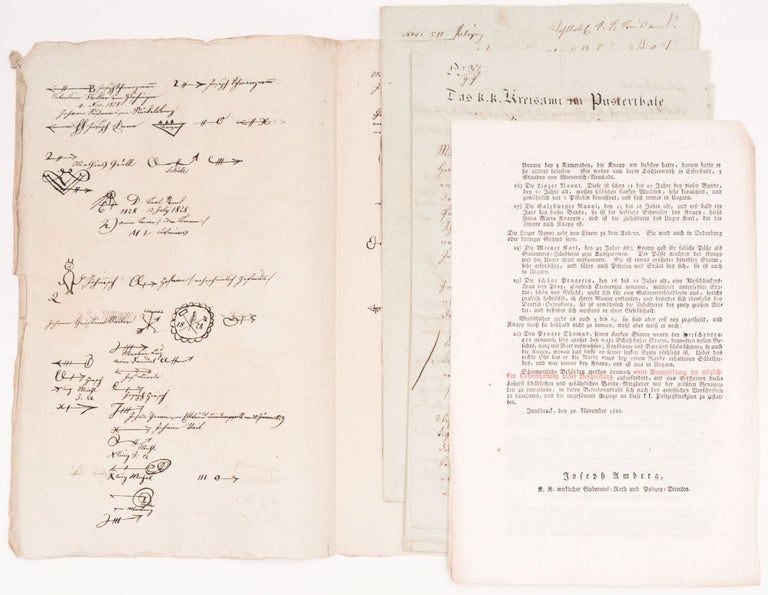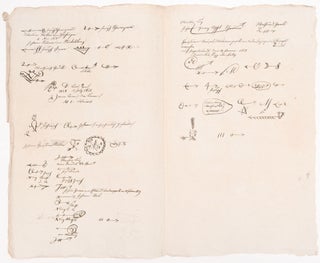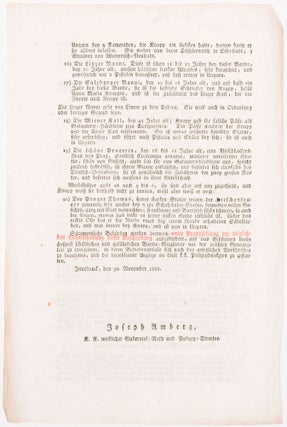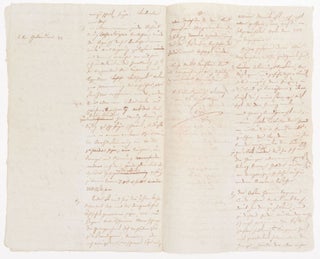A Collection of 19th-Century Austrian Police Documents Related to the Use and the Users of Gaunerzinken (Hobo Signs).
Austria: around 1822; 1830. Printed and handwritten documents: 2 printed documents (1 bifolio of printed Gaunerzinkens, ca. 1830; four-page printed police report “Beschreibung”, 1822); 3 handwritten letters, with the header “Das k.k. Kreisamt im Pusterthale und am Eisack”, 1830 (1; 3; 3 p); 1 lengthy handwritten report, 1830 (10 p.). Edges chipped, otherwise in fine condition.
A peculiar and scarce collection of police documents on 19th-century Austrian Hobo Signs.
Internal police reports on a 19th-century Tyrolean criminal gang and the description and interpretation of the Hobo signs, the so-called Gaunerzinken, they used.
Gaunerzinken was a symbolic language of the 19th-century, typically of Austrian, itinerant criminals. The history of the use of such graphical symbols roots in the 16th century, when the hieroglyphic-like signs served as general messages of illiterate peddlers and beggars. Later the practice of carving or drawing the symbols on various surfaces became associated with the criminal classes as a way of communication among the members or with other gangs. Eventually, this transformation aroused the interest of the police on the phenomenon.
In the first half of the 19th-century Kajetan Karmayr the Upper Austrian criminal judge from Freistadt was the first to collect and interpret these characters. Based upon Karmayr’s collection, Hans Gross, the founder of scientific forensic science, developed the standard work on the signs, Die Gaunerzinken der Freistädter Handschrift (Leipzig, 1899). In this book, Gross published more than 1700 symbols collected by Karmayr in the Mühlviertel between 1818 and 1830, gave their interpretation, and classified them into groups according to their meaning such as the various types of notifications and orientation, or the simple the signs of respective crooks.
The use of the Gaunerzinken was widespread throughout the Habsburg Empire, however, the characters were regionally different. Hence this unique and remarkable collection of documents, which represents a considerable body of characters and their interpretation from a distinct area of Austria, Tyrol, is an exceptionally interesting and particularly significant monument of forensic history and paleography.
.
Price: €4,000.00






